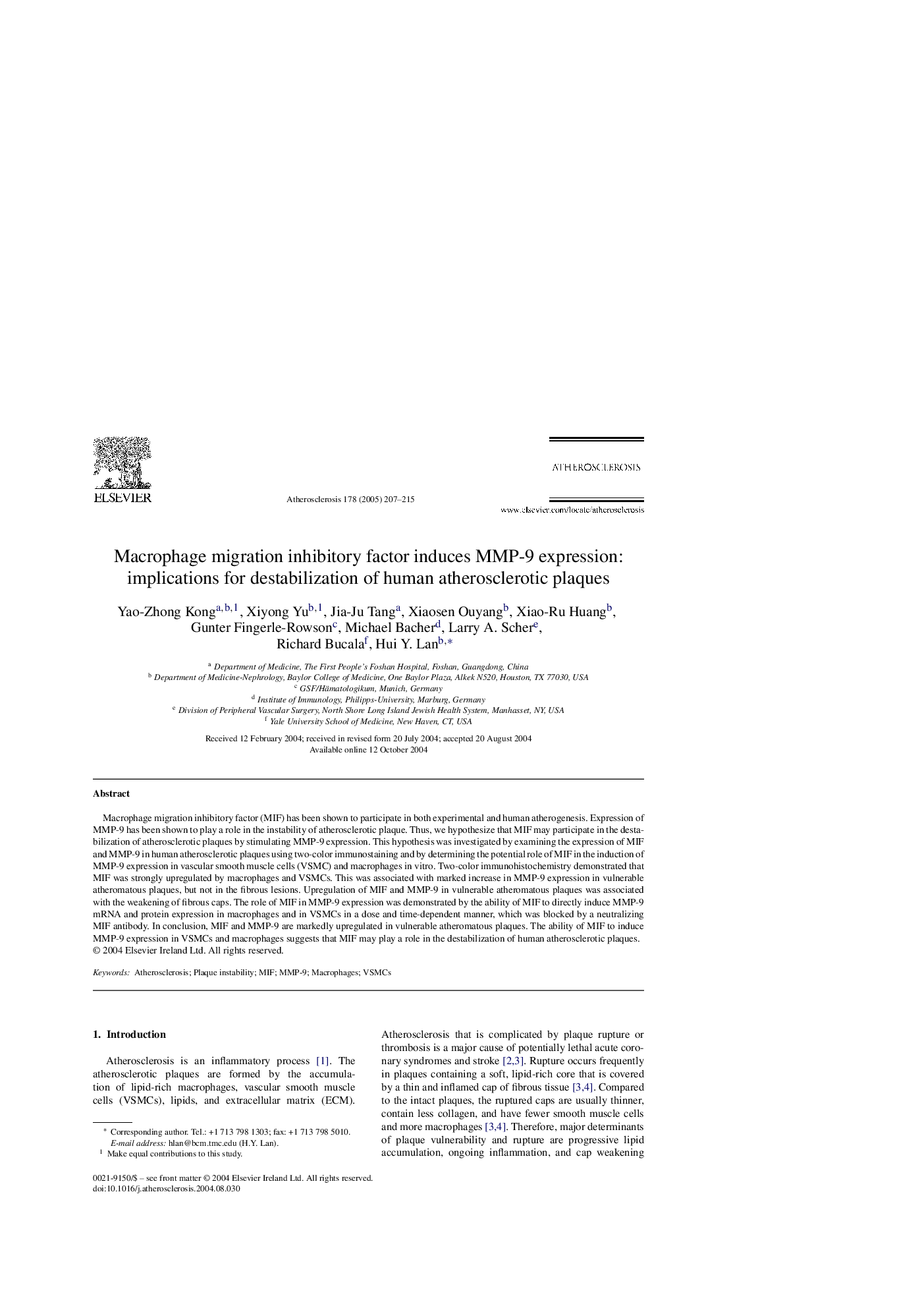| Article ID | Journal | Published Year | Pages | File Type |
|---|---|---|---|---|
| 9157890 | Atherosclerosis | 2005 | 9 Pages |
Abstract
Macrophage migration inhibitory factor (MIF) has been shown to participate in both experimental and human atherogenesis. Expression of MMP-9 has been shown to play a role in the instability of atherosclerotic plaque. Thus, we hypothesize that MIF may participate in the destabilization of atherosclerotic plaques by stimulating MMP-9 expression. This hypothesis was investigated by examining the expression of MIF and MMP-9 in human atherosclerotic plaques using two-color immunostaining and by determining the potential role of MIF in the induction of MMP-9 expression in vascular smooth muscle cells (VSMC) and macrophages in vitro. Two-color immunohistochemistry demonstrated that MIF was strongly upregulated by macrophages and VSMCs. This was associated with marked increase in MMP-9 expression in vulnerable atheromatous plaques, but not in the fibrous lesions. Upregulation of MIF and MMP-9 in vulnerable atheromatous plaques was associated with the weakening of fibrous caps. The role of MIF in MMP-9 expression was demonstrated by the ability of MIF to directly induce MMP-9 mRNA and protein expression in macrophages and in VSMCs in a dose and time-dependent manner, which was blocked by a neutralizing MIF antibody. In conclusion, MIF and MMP-9 are markedly upregulated in vulnerable atheromatous plaques. The ability of MIF to induce MMP-9 expression in VSMCs and macrophages suggests that MIF may play a role in the destabilization of human atherosclerotic plaques.
Related Topics
Health Sciences
Medicine and Dentistry
Cardiology and Cardiovascular Medicine
Authors
Yao-Zhong Kong, Xiyong Yu, Jia-Ju Tang, Xiaosen Ouyang, Xiao-Ru Huang, Gunter Fingerle-Rowson, Michael Bacher, Larry A. Scher, Richard Bucala, Hui Y. Lan,
